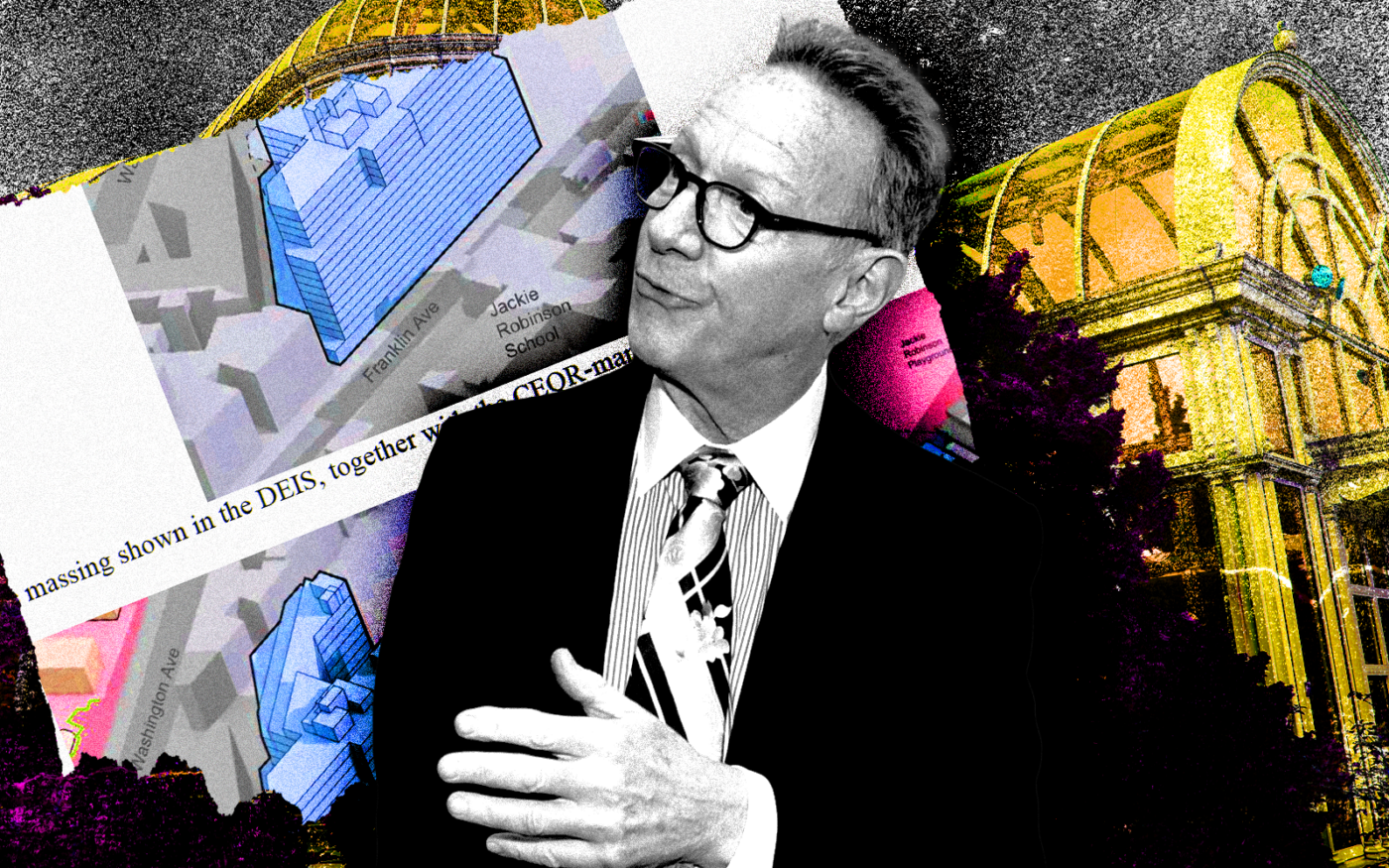Bruce Eichner is challenging an environmental review that threatens his proposed multifamily development near the Brooklyn Botanic Garden.
After the review concluded that Eichner’s 14-story proposal at 962 Franklin Avenue would harm the park by casting shadows on its plants, the developer has begun poking holes in the report. Known as CEQR, the review is required for all projects that need a rezoning.
“The CEQR methodology overestimates the potential shadow impacts,” Eichner’s attorney wrote to city authorities and local community leaders last month.
The environmental review infers “longer potential incremental shadow increases (both in length and duration) than an actual project is ever capable of generating,” according to the letter, which was viewed by The Real Deal.
The city’s planning agency put Eichner’s new proposal into the public land review process, called Ulurp. The city is seeking to bring housing to the site, though Eichner’s 2019 proposal (planning 39 stories on a larger tract of land) drew community opposition.
Now, Eichner will have to overcome the Botanic Garden’s opposition if he hopes to win approval for his more modest vision.
“The environmental impact report shows that the project would definitely block sunlight,” said Leah Goodridge, a tenants’ rights attorney and a commissioner at the Department of City Planning, on the social media platform X.
According to Eichner’s letter, the report assumes a 55-foot bulkhead would rise above the maximum building height and be “constructed over the entire building footprint.” However, “existing zoning regulations do not allow the bulkheads to span the entire building footprint,” according to the letter, and “buildings rarely, if ever, have a 55-foot-tall bulkhead.”
While Eichner concedes his project would cast a shadow, he claimed it would be shorter than the environmental reviews’ estimate.
“Because the maximum shadow length is calculated at 4.3 times the height of the structure, the conservative CEQR methodology overestimates the reach of certain shadows by as much as 225 feet,” his attorney wrote.
The letter also faults the review for not evaluating a stepped-down building design, intended to allow more light to pass over the proposed development.
An official from the Botanic Garden recently said that the institution is now evaluating the stepped-down design.
The offices of New York City Councilmember Crystal Hudson and Brooklyn Borough President Antonio Reynoso, listed as recipients of Eichner’s letter outlining the objections, did not return a request for comment. Previously, both deferred to the judgment of the Botanic Garden. Eichner did not respond to a request for comment.
Read more



Eichner’s project is too large to qualify for an exemption to environmental reviews, which the Adams administration passed in December for certain projects with fewer than 250 units.
In New York, environmental reviews have been faulted for unnecessarily delaying new housing projects, often taking up more time than the public review of the project itself, all while burning a hole in the pockets of developers.
Development opponents frequently rely on environmental guarantees made by the city to mount lawsuits, further delaying the construction of housing.
